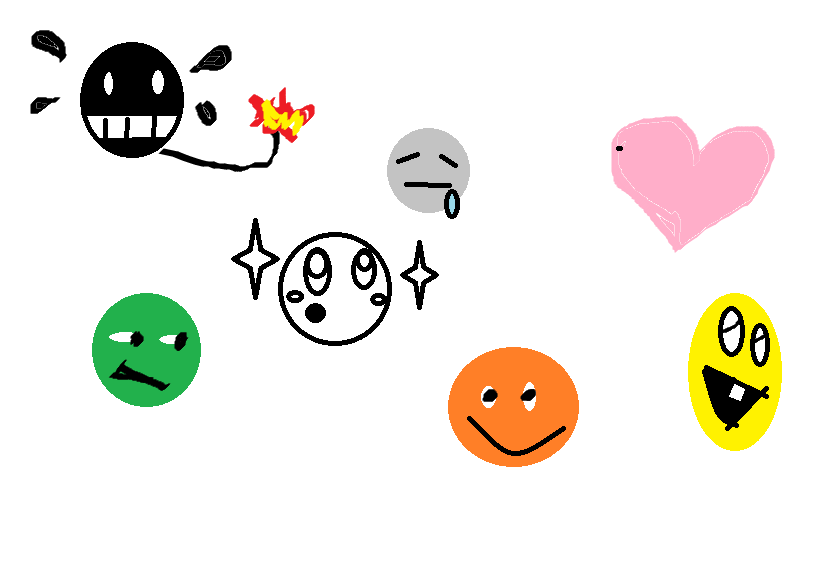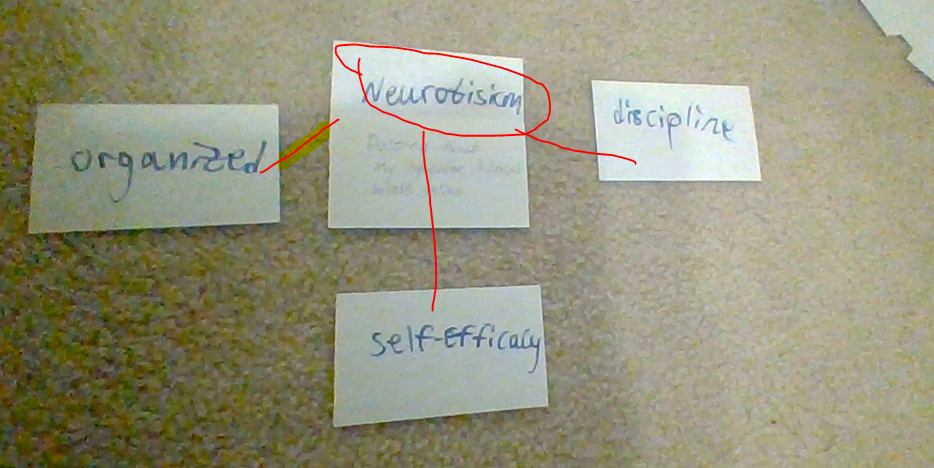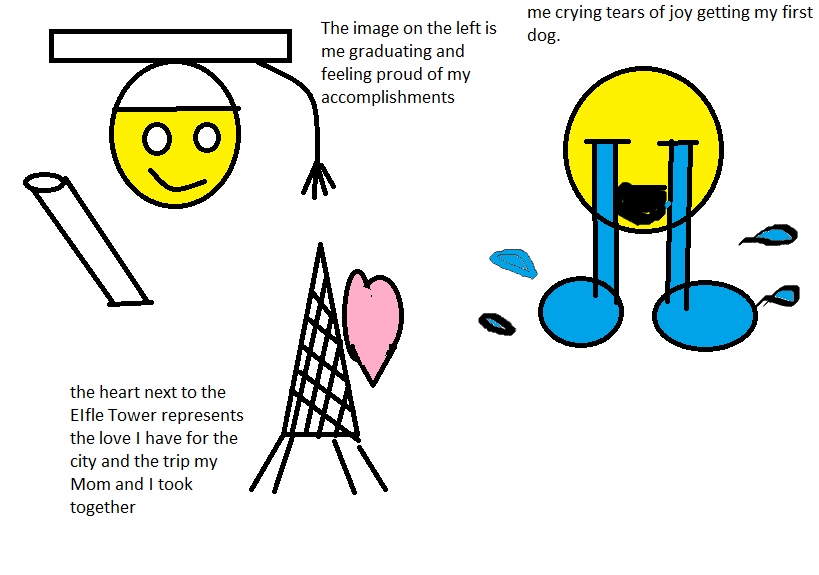You will be prompted, weekly, for various items to archive. Please refer to the Google Docs document in the e-Portfolio folder in Bb, which will provide tips on how to store and organize these artifacts. By the time this component of your eP is due, you will have a rich repository from which to draw. You will choose the top five artifacts that you believe best represent your learning experience in this course. Each item should contain a representative picture and a summary for why it was selected, including why it is representative of your learning experience.
Artifact 5: Module 12
Psyc 420
Module 12 Archive
Watch Amy Cuddy’s Ted Talk “Your Body Language May Shape Who You Are.”
Video link: https://www.youtube.com/watch?v=Ks-_Mh1QhMc
Discuss your takeaway from this video. How do some of the points in the video align with what you read in the Culture, Language, and Communication chapter?
I have learned a number of items based on the representation of culture and body expression that have given me a deeper understanding in relation to language. There are many ways in which individuals express themselves and one of the ways in which individuals do this is through body language. Body language is important as it gives clues to the subtle indicators of what an individual may really feeling on the inside. Based on the video there are indicators in relation to testosterone as well as cortisone that can influence the way we act in certain situations. As such, it is important to be cognizant of the types of behavior we display around other individuals and to attempt to implement these behaviors in a way that is appropriate to the context or situation we are interacting with.
Visual artifact idea: include an image that you feel captures your predominant body language.
Internally I feel that I am a person who has been confined by social expectations and that has intern caused me to become dependent on approval from individuals who do not have my best interest at heart. Therefore, I have chosen an image that represents my departure and running away form those types of feelings in order to pursue a higher purpose and become an individual who is reliant upon oneself for what they need.

Artifact 4: Module 11
Psyc 420
Module 11 Archive
Color & Emotion
Don’t look at Page 2 until you’ve completed the prompts below.
Do you find any similarities or differences in the colors listed below? First, categorize the following 12 colors into groups, and state the rationale of your categorization.
Black, Blue, Brown, Gray, Green, Orange, Pink, Purple, Red, Violet, White, Yellow
Category 1: blue, brown, red
Rationale:
These colors have depth to them, and I believe they represent the more passionately oriented emotions like sadness, sadness or disgust.
Category 2: green, yellow, orange, pink, violet, purple
Rationale:
I grouped these colors together because they evince a sense of loudness and happiness as well as brightness.
Category 3: gray, white, black
Rationale:
I put these together because technically they are considered shades and not colors (at least from my understanding).
Write emotion words which you will associate with each of the following colors.
- Black: worry 7. Pink: love
- Blue: sad 8. Purple: calm
- Brown: happy 9. Red: anger
- Gray: bored 10. Violet: affectionate
- Green: disgust 11. White: clean
- Orange: gladness 12. Yellow: happy
Did you find any association between your categorization in (1) and the results of (2)?
I don’t seem to notice any immediate relations between 1 and 2. The only association I notice is that I chose colors that originate with a type of emotion they bring about.
Visual artifact idea: include a picture of your color categorization
Objective:
Hupka, et.al (1997), researched the relationship between color and emotion in the United States, Germany, Mexico, Poland, and Russia. As a result, they found some cross-cultural differences. For example, Americans connected black, green, and red with envy; and Russians associated black, purple, and yellow with envy. This exercise will give you the opportunity to relate colors with emotion words and realize diversity in individuals’ perception on colors.
Reference:
Hupka, R. B., Zalenski, Z., Otto, J., Reidl, L., & Tarabrina, N. V. (1997). The colors of anger,
envy, fear, and jealousy: A cross-cultural study. Journal of Cross-cultural Psychology,
28, 156-171, Sage Publication, Inc.
Visual artifact idea: include a representative image of
Reference:

Artifact 3: Module 10
How Long Can You Wait?
Hall (1973) suggested that cultures differ in their time perspective and orientation. He analyzed differences among people of different cultures in their use of time and how these differences manifested themselves in actual behavioral practices with such context as business. We interact with various people in our daily lives. However, the point is whether people present different behaviors to different people in terms of time. Suppose you have an appointment to meet each of the following people somewhere outside. If your partner did not show up at the appointed time, how long can you wait or are you willing to wait? Write the minutes you can wait for each person below.
|
Target Person |
Minutes |
|
Your parent |
180 mins |
|
Your older sibling |
10 mins |
|
Your boyfriend or girlfriend |
120 mins |
|
Your best friend |
180 mins |
|
Your colleague |
420 mins |
|
Your client |
120 mins |
|
Your boss |
1440 mins |
Did you find any differences in the results?
yes
If you said “yes” in the previous question, who will you wait for the longest time and who will you wait for the shortest time? Why?
According to the time stamps that I provided, I prioritize my work over those whom I care most for in the world. This is simply because I have work and I know that my parents as well as those close to me understand that work is important and allows me to increase capitol.
Visual artifact idea: include a representative image of your perception on “time.”
Reference:
Hall, E. T. (1973). The Silent Language. Anchor Books. Garden City: New York.

Artifact 2: Module 8
Personality in Context
Describe past episodes where your behaviors did not match your personality traits. Describe them in detail, such as how you behaved, what you said, etc. in each episode.
Look at the Table 6.2 (p.132) in the textbook. Which subtraits in the table, do you think, were reflected in your behaviors shown in the episodes?
Do you think that we are likely to reflect consistent personality in our behaviors or do you think that context influences our personality?
There are many moments in my life in which I know that I tend to demonstrate neurotic behavior and its consequences. As a result of this, I often find myself forcing a disconnect between my natural thoughts and behaviors in an attempt to supersede my impulsive nature. As many understand, neuroticism breeds a host of subtraits, but none quite so dangerous as that of impulsivity. Although I try to circumvent situations in which would cause me to react impulsively, I do not always succeed. For better or for worse, there is perhaps no situation that stands out more than when I decided to post on social media about a controversial topic and my stance on it. The subject matter was a hot button issue, and although I like to avoid conversation that might cause me to be seen in a different light by my peers, I felt that saying nothing would be worse. Throughout my life I have learned what was the “acceptable opinion” versus what is the “unpopular opinion.” Unfortunately, it did not seem to matter whether an opinion had any truth to it, so long as the majority ordains something as right then, that is what is right. Finally, being fed up with today’s cancel culture and mob like behavior, I could not hold it in myself to be quiet after many years of being passive. So, I drew a line in the sand and posted an everlasting banner of my disdain for a certain term that has become quite popular these days. In hindsight, I had not realized how much my mental health would be impacted following the next few days from when I had posted on social media. I felt an unbelievable amount of anxiety, self-consciousness, and extreme vulnerability. It took me a whole week to reconcile with myself that my post will be on social media forever, and that I had a dangerous habit of second guessing what I believe to be morally correct.
I can attest in my own life that my personality has been consistent with anxiety as well as self-consciousness among other fear inducing subtraits. And it takes an extraordinary amount of effort for me to feel calm and relaxed in a situation and to not demonstrate any form of neuroticism. For much of my life I have lived with these difficulties and believe that personality is somewhat static and does not change too drastically throughout life. This is not to say that environmental events (like trauma) does not have an impact on the personality of others but at least in my life, I have noticed a pattern and have learnt to cope with some of the personality that I happen to have.
Visual artifact idea: create a word cloud with words of the behaviors and corresponding subtraits reflecting the behaviors that don’t match your personality traits; take a picture of the table with the representative subtraits highlighted.

Artifact 1: Module 7
Self-construal and Emotion
Emotions can be classified into those that encourage independence of the self from others and those that encourage interdependence with others (Kitayama, Markus, & Matsumoto, 1995). Kitayama et al. have defined “socially disengaged emotions” as the emotions that tend to separate or disengage the self from social relationships and promote the perceived independence of the self from those relationships. On the other hand, they have defined “socially engaged emotions” as those that tend to assimilate the self in the relationship and enhance the perceived interdependence of the self with relevant others.
- Write five happy episodes or situations which you have experienced in the past.
- Graduating high school
- Prom
- Going to Paris with my Mom
- Receiving my job at Eastern Virginia Medical School
- Getting my dog
- Look at your responses again. Which episodes or situations do you think are associated with “socially disengaged emotions”? Which episodes or situations do you think are associated with “socially engaged emotions”? Write the numbers of the episodes.
- Socially disengaged emotions:
There are only two episodes in which I believe represent socially disengaged emotions, and those goes as follows: graduating high school and receiving my job at Eastern Virginia Medical School. I believe that these are indicators of “socially disengaged emotions” because they represent stages in my life in which I am transitioning from dependence to independence by obtaining my high school diploma and eventually working for an institution and getting paid. Both of these developments have allowed me to become a more self-actualizing individual; in which self-reliance is an important aspect of being who I am.
- Socially engaged emotions:
As much as I appreciate the independence that I have in my life, there are many moments that I recognize as having “socially engaged emotions” and those situations include: prom, going to Paris with my Mom, and getting my first dog. The qualities that make me happiest I realize, are being able to share in emotions that are with the people whom I love and appreciate most. In the first example I mentioned, prom is an important experience that gave me the opportunity to have a “last hurrah” with my friends and enjoy our accomplishments together. Going to Paris with my Mom was another special moment in which I recognize as a moment that engages in interdependence by recognizing how intertwined my happiness is when I am with people I care about. And finally, the last example in which stands out as a happy experience was receiving my first dog Coco Chanel. This experience was important to me because it increased the size of our family and she is the beloved family dog and thus brings joy to each and every one of us. She without realizing it, is an integral part of our family unit and only strengthens the bond that I have with my family members as a result of her addition.
I will cherish as it allowed us to spend quality time together and experience a culture that I had never seen before. The trip was one of the best
Visual artifact idea: find a representative photo or image which illustrates each of these emotions.
Reference:
Kitayama, S., Markus, H. R., & Matsumoto, H. (1995). Culture, self, and emotion: A cultural
perspective on “self-conscious” emotions. In J. P. Tagney & K. Fisher (Eds.), Self-
conscious emotions: The psychology of shame guilt, embarrassment, and pride (pp. 439–464).

